| Strain Name |
C57BL/6-Plautm1(PLAU)Bcgen Plaurtm1(PLAUR)Bcgen/Bcgen
|
Common Name | B-hUPA/hUPAR mice |
| Background | C57BL/6 | Catalog number | 112324 |
| Aliases |
ATF; QPD; UPA; URK; u-PA; BDPLT5 |
||
Protein expression analysis
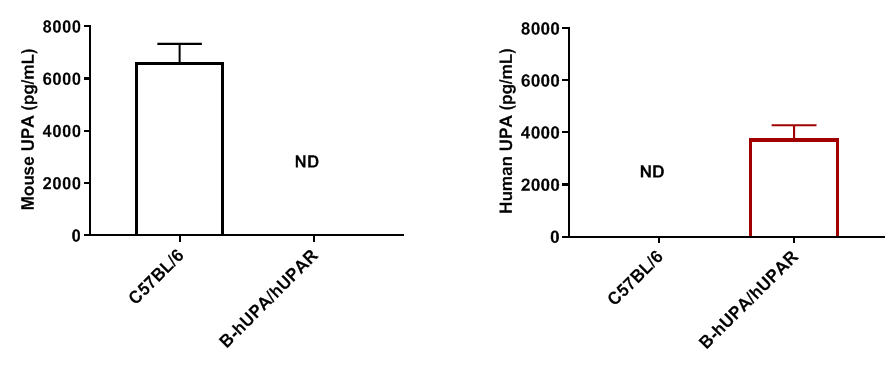
Strain specific UPA expression analysis in homozygous B-hUPA/hUPAR mice by ELISA. Serum was collected from wild-type C57BL/6 mice and homozygous B-hUPA/hUPAR mice (male, 9-week-old, n=3), and analyzed by ELISA with species-specific UPA ELISA kit. Mouse UPA were detectable in wild-type C57BL/6 mice. Human UPA was exclusively detectable in homozygous B-hUPA/hUPAR mice but not in wild-type mice.
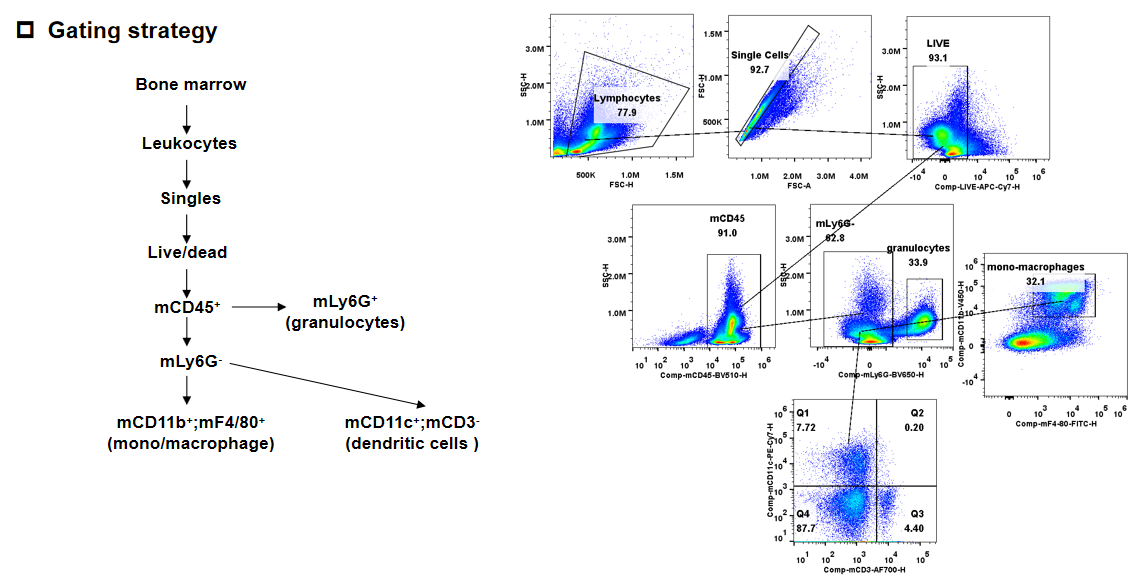
Protein expression analysis
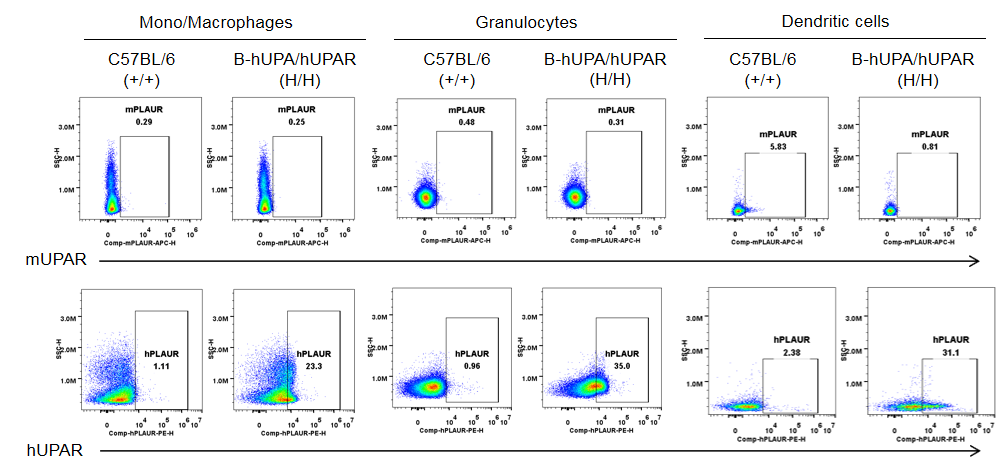
Strain specific UPAR (also named PLAUR) expression analysis in homozygous B-hUPA/hUPAR mice by flow cytometry. Bone marrow were collected from wild-type C57BL/6 mice (+/+) and homozygous B-hUPA/hUPAR mice (H/H), and analyzed by flow cytometry with species-specific anti-UPAR antibody. Mouse UPAR was only detectable in in dendritic cells of wild-type mice. Human UPAR were exclusively detectable in mono/macrophages, granulocytes, and dendritic cells of homozygous B-hUPA/hUPAR mice but not in wild-type mice.
In vivo efficacy of anti-UPAR antibodies

Antitumor activity of anti-UPAR antibodies in B-hUPA/hUPAR mice bearing B-hUPAR MC38 cells. (A) Tumor growth in B-hUPA/hUPAR mice that treated with anti-UPAR antibodies (in house) indicated in the panel. (B) Body weight changes during treatment. Murine colon cancer MC38 cells that express the human UPAR protein were subcutaneously implanted into homozygous B-hUPA/hUPAR mice (female, 7-9 week-old, n=6). Mice were grouped when tumor volume reached approximately 100 mm3, at which time they were treated with antibodies. Values are expressed as mean ± SEM.
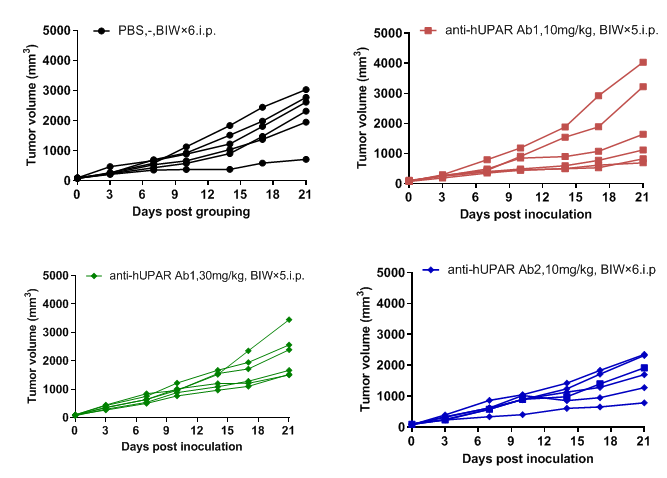
Antitumor activity of anti-UPAR antibodies in B-hUPA/hUPAR mice bearing B-hUPAR MC38 cells. Tumor growth curve in individual B-hUPA/hUPAR mice that treated with anti-UPAR antibodies (in house) indicated in the panel.
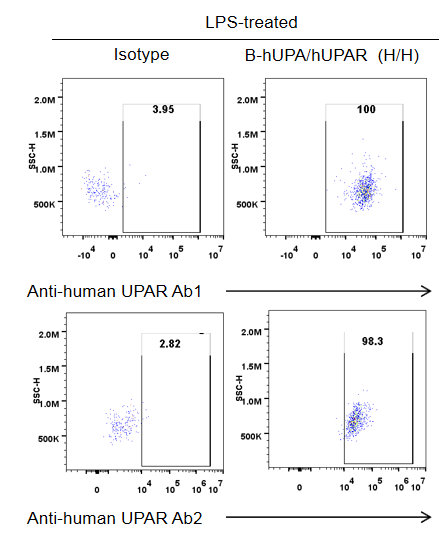
Anti-human UPAR Ab2: binding UPAR Domain 2+Domain 3









